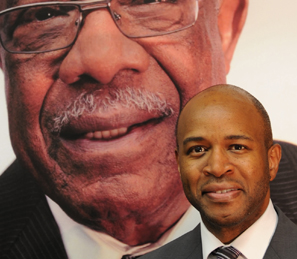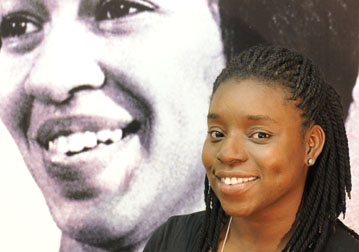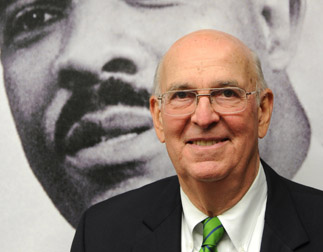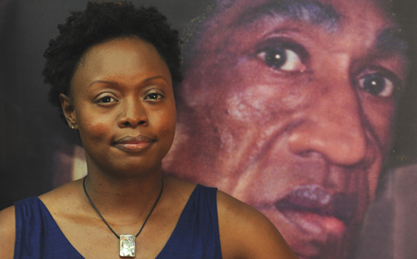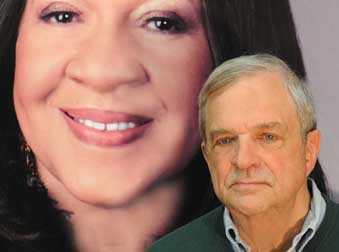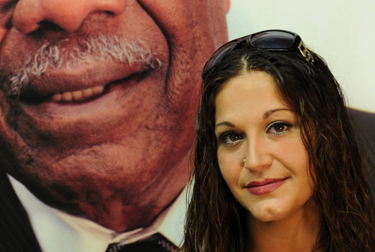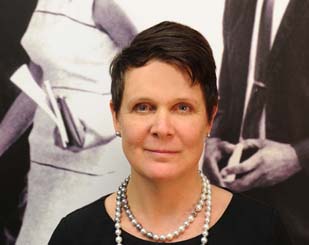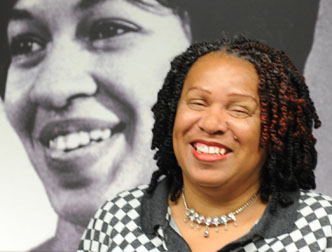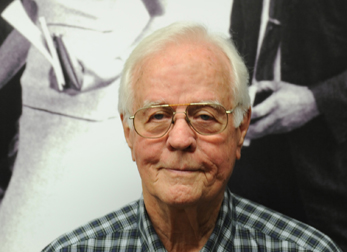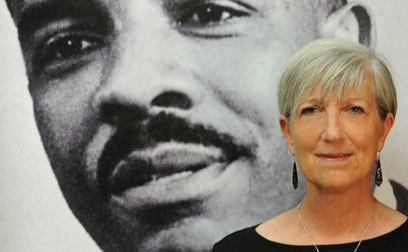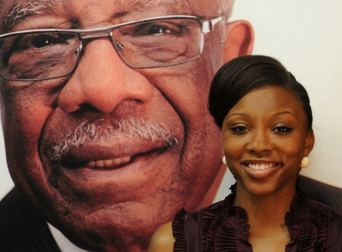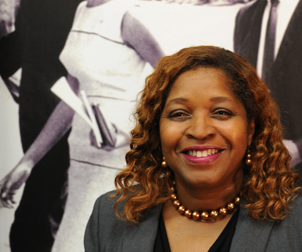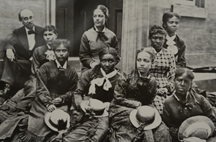

1963-2013: Desegregation—Integration Reflections |
|||||||||||||||||
“All of us at the University should never be satisfied where we are. I am mindful of the Museum’s Travelstead Room and Travelstead Award, and I believe it is incumbent upon the university to be a voice for change in the state and to take clear policy positions that come from informed research and public engagement. When it comes to education, health care, economic development, and other public policy debates, the University should lead the way in shaping dialogue and advancing creative solutions that will benefit every citizen.” Bobby Donaldson |
|||||||||||||||||
“Integration is difficult and still yet to be accomplished. Consequently I’m uncertain about what we must do today. I am worried about today’s law enforcement system and the way it targets the poor, especially poor blacks. The poor and especially the black poor are concentrated in particular neighborhoods. I grew up in a housing project, and there is a culture in those neighborhoods that frightens me. Some of the children are not taught the value of life. I am concerned about how many lives are lost forever—many who would become productive citizens are being taken out of society before they have a chance to contribute.” James Solomon |
|||||||||||||||||
|
|||||||||||||||||
“The fundamental challenge is to develop, implement, refine, and sustain formal and informal structures to delineate and monitor the University’s goals and progress towards becoming a truly integrated community. There are a lot of verbs in that statement, but they indicate that intentional action is essential. This requires an offensive rather than a defensive frame of mind. In many institutions, efforts to address issues of race are primarily compliance oriented, designed to keep the institution out of trouble. That is better than doing nothing, but it will not result in ‘a truly integrated community.’ Achieving that will require a lot of hard thinking about what it means for USC to be an integrated community, whether becoming such a community is a bedrock University value, and what metrics—qualitative as well as quantitative—the University will use to assess whether and to what extent it is becoming, or is, an authentic integrated community.” Hayes Mizell |
|||||||||||||||||
“Many of our programs still need to recruit and retain racially and ethnically diverse students. Many departments and colleges have successfully recruited and retained diverse faculty; many still struggle. As an institution, we incentivize people to work towards goals that are important. What would it look like to really ask the hard questions: which programs have demonstrated success in recruiting, retaining and graduating racially and ethnically diverse students? what are they doing? what is it like for faculty of color to teach and work at USC? what are the barriers to promotion and tenure for diverse faculty? how can we support programs and majors in recruiting/retaining racially and ethnically diverse students? I think that being truly integrated is a process. When we lose count of the number of diverse faculty who are deans, full professors and department chairs [e.g. so and-so is the first, second, etc.] and diversity is normal, then we can truly say we are integrated.” Daniella Ann Cook |
|||||||||||||||||
“There are times when people have said to me that nothing has changed. I look out my window and remember the campus when everybody was white except for three people. And when those three African Americans would be seen on campus, 99% of the time they would not be interacting with anyone. Now, you walk around campus and see large numbers of blacks talking to whites and blacks and whites interacting in very relaxed ways. They may return to certain settings, but students are much more comfortable just being in the same world with one another. |
|||||||||||||||||
“It is the duty of all institutions to promote acceptance. The enemy of acceptance is what ultimately leads to hate crimes, violence, and wars. The mere act of accepting others who are different from ourselves can have a major impact on society. Further, it is important to express outrage for injustice. When people are wronged, it is our duty to get angry, discuss the issue, and do our best to change things for the better. Further, it is our responsibility to own our wrongdoings and by doing so proactively change for the better and for the future.” Jessica Seeger |
|||||||||||||||||
“We need to continually rethink our programs, our leadership, and our role in the community. Are we asking questions such as: Do our programs invite students from racially, culturally, and ethnically diverse backgrounds to share their areas of expertise and their experiences? Are we part of our community? Is our leadership at the university and college level truly diverse? Do we value students’ experiences that may be different from ours and do we really consider multiple perspectives? Do we continually ask ourselves if we are perpetuating racial injustices or are we challenging the status quo, are we acting as allies for our students and colleagues of color?” |
|||||||||||||||||
“Universities are incubators for the values of our society and display how communities should be. There is a normalcy for what is right, and that occurs when the student body, faculty, and administration are at ease with where they are—they are comfortable in their own setting. Integration at the university is beginning to look right and feel right. The institution is not struggling to ‘get its numbers,’ i.e., to balance and reflect the diversity of the state. Today’s students seem to be getting it right and seem more comfortable. Diversity is not contrived and not a gathering to discuss the topic of integration. It is what they do as a part of their normal lives. Today’s young people are beginning to get it right.” |
|||||||||||||||||
|
|||||||||||||||||
“We must continue our efforts for more diversity within the faculty and staff so that those students—some African American students, some first generation college students, even some students unfamiliar with being at a large university—have guides and mentors who they can turn to for help. There are many, many different cultures here—racial, ethnic, and international—and the diversity is growing each year in South Carolina. We must look for ways to provide diversity at the university so that we can bring people together.” |
|||||||||||||||||
“The schools themselves can do great things. But if there is going to be real change, something must be done with the membership on school boards. State-wide and typically in rural areas, school boards are still made up of predominantly old, white men. Until there is some diversity at that high administrative level, schools are not going to be integrated.” Bill Dufford |
|||||||||||||||||
“I am energized by the agency I see in our students. They push us in remarkable ways by asking difficult and courageous questions: Where are discussions of race in our classes? Where are professors of color in this program? Where are scholars of color richly represented in the study of this field? My advice as we strive for true integration is to create safer spaces for talk that examines issues of race, listening here and in national and international arenas to those who know injustice as it plays out day-to-day; using insights to inform institutional change. Prefacing all of that, however, is asking if we actually seek a truly integrated community and whether or not we are prepared for the changes necessary to making that possible.” Susi Long |
|||||||||||||||||
“In order to achieve a truly integrated community, educators, faculty, students, and everyone who walks along the university's campus must first want integration to transpire within themselves. As long as we have attitudes and dispositions of separateness, then the cultural bind will remain unbroken. The university as a whole has to eliminate the colorblind approach when it comes to catering to students of various cultures. Yes, we all want to be treated equally, but we are not the same for obvious reasons. So we should be treated differently according to what makes us who we are. The actions of the university, actually putting forth an effort to become integrated, will reach the students and allow them to see what the school is really about.” Ashley Allen |
|||||||||||||||||
“There is a need for structural changes in administration, policies, programs, and practices. Understanding the need for people of color to hold key roles (beyond tokenism and ‘person of color du jour’) is important. University leaders would benefit from familiarizing themselves with the body of knowledge on issues of race and on variation within racial groups so that the assumption is not made that all people of color think and behave alike. Colorblind theories, beliefs, and actions will necessarily have to be discarded. It would be useful to consult a wide range of people of color in the community (not just a select few who view integration as assimilation), but community members (including youth) who can share their perceptions of the university and whether it is seen as inviting.” Gloria Boutte-Johnson |
|||||||||||||||||
|
|||||||||||||||||
![]()

to next exhibit

an institutional member of the International Coalition of Sites of Conscience
Museumofed@gmail.com

